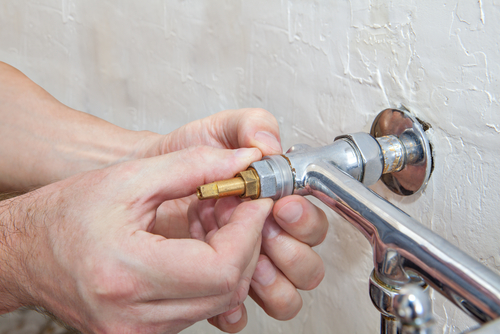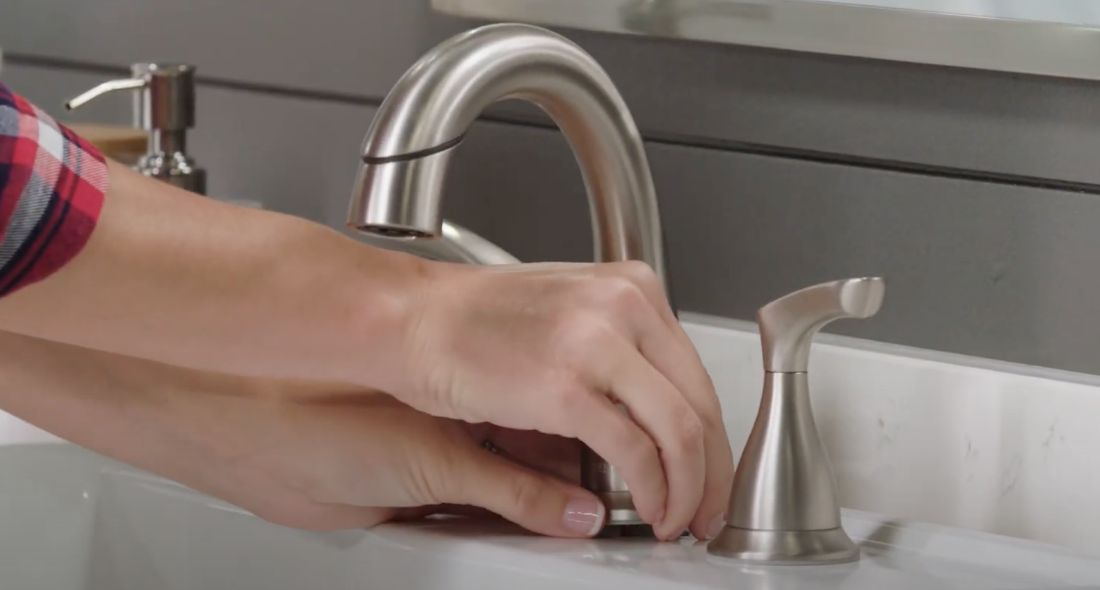How It's Important to Rectify a Malfunctioning Faucet
How It's Important to Rectify a Malfunctioning Faucet
Blog Article
This post listed below relating to Leaky Faucets: Why They Happen & What to Do About Them is highly engaging. Don't miss it.

Dripping taps could look like a small aggravation, but their influence goes beyond just the aggravation of the sound. From wasting water to incurring unnecessary monetary prices and wellness risks, ignoring a leaking faucet can cause different repercussions. In this post, we'll look into why it's critical to address this common household concern quickly and effectively.
Wastage of Water
Environmental Impact
Dripping taps add dramatically to water wastefulness. According to the Epa (EPA), a single tap dripping at one drip per secondly can squander greater than 3,000 gallons of water per year. This not just stress water resources yet likewise affects communities and wild animals based on them.
Step-by-Step Overview to Taking Care Of a Dripping Faucet
Devices Required
Prior to trying to repair a trickling faucet, collect the necessary devices, including a flexible wrench, screwdrivers, substitute parts (such as washing machines or cartridges), and plumber's tape.
Usual Faucet Issues and Their Solutions
Determine the sort of faucet and the certain concern causing the drip. Typical issues consist of damaged washing machines, corroded shutoff seats, or damaged O-rings. Describe manufacturer instructions or on the internet tutorials for step-by-step support on repair services.
Financial Prices
Raised Water Costs
Past the ecological effect, leaking faucets can inflate water bills substantially. The accumulated wastefulness over time translates right into higher utility expenditures, which might have been avoided with prompt fixings.
Potential Residential Or Commercial Property Damages
Additionally, prolonged trickling can result in harm to fixtures and surfaces bordering the faucet. Water buildup can cause discoloration, corrosion, and also architectural issues if left ignored, causing additional repair service costs.
Health and wellness Problems
Mold and Mildew Development
The constant existence of dampness from a dripping faucet produces an ideal setting for mold and mildew growth. These fungi not just compromise interior air high quality yet also present wellness dangers, specifically for people with breathing conditions or allergies.
Waterborne Illness
Stagnant water in leaking faucets can become a breeding ground for bacteria and other virus, raising the threat of waterborne diseases. Impurities such as Legionella microorganisms prosper in stagnant water, potentially bring about significant health problems when ingested or breathed in.
Do it yourself vs. Professional Fixing
Benefits and drawbacks of DIY Repair
While some might attempt to deal with a leaking tap themselves, DIY fixings include their very own set of obstacles. Without proper understanding and devices, DIY efforts can worsen the issue or bring about incomplete fixings, prolonging the issue.
Advantages of Hiring an Expert Plumber
Employing a specialist plumber guarantees that the underlying root cause of the trickling faucet is addressed efficiently. Plumbing professionals have the expertise and equipment to identify and repair faucet problems effectively, conserving time and lessening the threat of more damage.
Environmental Responsibility
Individual Contribution to Conservation
Taking obligation for taking care of leaking faucets aligns with more comprehensive efforts toward water conservation and environmental sustainability. Every person's activities collectively make a significant impact on preserving precious sources.
Lasting Living Practices
By focusing on prompt fixings and embracing water-saving practices, people contribute to lasting living practices that profit both present and future generations.
Safety nets
Routine Upkeep Tips
To prevent trickling faucets, carry out routine upkeep such as cleaning aerators, evaluating for leaks, and changing damaged parts immediately. Additionally, think about setting up water-saving tools or upgrading to much more reliable components.
Significance of Prompt Services
Resolving leaking faucets as soon as they're noticed avoids further water wastage and prospective damages, inevitably conserving both water and cash in the future.
Impact on Residential Property Worth
Assumption of Well-Maintained Property
Preserving a building in good condition, consisting of attending to maintenance issues like dripping taps, boosts its viewed value and desirability amongst prospective buyers or lessees.
Impact on Resale Value
Characteristics with well-maintained plumbing components, including taps, command higher resale worths in the realty market. Addressing leaking faucets can add to a positive perception during residential property evaluations and arrangements.
Conclusion
Attending to a dripping faucet surpasses plain convenience; it's a necessary action toward saving water, decreasing economic costs, and protecting wellness and property. Whether through DIY repair services or specialist aid, taking action to repair leaking faucets is a little yet impactful way to promote responsible stewardship of resources and add to a much healthier, extra lasting future.
How to Fix a Dripping or Leaky Faucet
A leaking faucet is one of the most common problems that homeowners encounter, but it being commonplace doesn’t make it any less annoying. The constant drip drip drip of a leaking bathtub faucet, showerhead, or sink tap can disturb your home’s serenity. Left neglected, a dripping faucet can also result in higher water bills and discoloration or mold growth in your sink or plumbing fixtures.
Fortunately, you don’t have to be a trained plumber to know how to stop a dripping faucet. With some basic tools, replacement parts, and a little patience, leaky faucet repair is a breeze. In this article, we’ll explain what causes dripping faucets and how you can fix them.
What Causes a Leaking Faucet?
Kitchen and bathroom faucets come in all manner of designs, but most involve some combination of valves, O-rings, seals, and washers. The O-ring is usually the weakest link, but any one of these pieces can wear down over time. Heat, moisture, temperature fluctuations, minerals, mold, and movement can contribute to warping and corrosion, breaking the watertight seal. This just comes with the territory of being a homeowner. Everything is always subject to wear and tear, and some component parts of your appliances and fixtures need to be replaced on occasion. At least replacement O-rings are cheap!
More rarely, dripping faucets can be a symptom of excessively high water pressure. Were this the case in your home, you would probably notice that the leak is not isolated to one faucet. Water pressure issues are harder to resolve on your own. We recommend contacting a professional plumber if you suspect your water pressure is too high.
How to Fix a Dripping Faucet
Pipe wrench or monkey wrench Allen wrench set Screwdrivers Old towel or rag Shut off the water.
Before you do anything, you need to turn off the water to keep from drenching your kitchen or bathroom. You should find a valve under the sink and against the wall. Once you’ve turned this valve, try turning the faucet on to confirm that the water source has been cut off.
If you can’t locate your local valve for the faucet you’re working on, you can always shut off the water to the house at the main valve. Of course, this will prohibit anyone from using the sinks, showers, or toilets while you’re working on the faucet that’s giving you trouble.
Plug or block the drain.
You’ll be disassembling the faucet and removing some small bits of hardware. Plug the drain with a stopper or rag to avoid the possibility of a small screw falling into your P-trap.
Take apart the faucet assembly.
There are several varieties of kitchen and bathroom faucets, each with its own manner of assembly. For detailed instructions on how to disassemble your faucet, you can refer to the fixture’s manual or contact the manufacturer. If you know whether you have a ball, disc, cartridge, or compression faucet, you can find detailed schematics online.
In general, you need to begin by removing the faucet handles. You might notice a small screw that you’ll need to remove with a screwdriver or Allen wrench. If you don’t see any visible securing hardware, it’s likely hidden under a decorative cap that can be unscrewed or popped off with flathead screwdriver.
Remove each piece methodically, consulting a schematic when necessary. Take notes or arrange the pieces in such a way to make it easier to correctly reassemble the faucet later.
Remove the cartridge.
Once you’ve removed the handles and securing hardware, you should be able to remove the valve cartridge or stem. Some cartridges will slide right out. Other faucet models will require you to loosen a nut with a pipe wrench before you can remove the valve stem.
Examine the exposed hardware.
With the cartridge or stem removed, inspect the component parts. Check the rubber O-rings for wear and tear. Also examine the seat washer for corrosion or other damage. These pieces are usually the responsible parties for a dripping faucet, but it’s worth inspecting the other component parts while you have the faucet disassembled.
Find replacement parts.
Once you’ve identified which faucet component has failed, find an identical replacement. Your local hardware store should have O-rings, seat washers, and other standard components in stock. If you have a luxury or uncommon faucet, you may have to contact the manufacturer for a replacement part.
It’s a good idea to take your old parts with you to the hardware store so you can compare them with the store’s inventory and be sure you’re purchasing the correct replacement.
Reassemble the faucet.
With your new parts in hand, reconstruct the faucet and handles. Don’t be tempted to overtighten screws or nuts. You might think this could create a better seal, but it can instead damage or bend a delicate part of the assembly and create a new problem for you.
Turn on the water and test the faucet.
The only thing left to do is test your work. Unplug the sink, turn the water back on, and try the faucet. Congratulate yourself on a job well done!
https://www.libertyhomeguard.com/how-to-fix-a-dripping-or-leaky-faucet/

I was introduced to that write-up on Should I Repair or Replace a Leaky Faucet? from a good friend on a different web property. Sharing is nice. Helping people is fun. Thank you for your time invested reading it.
Report this page